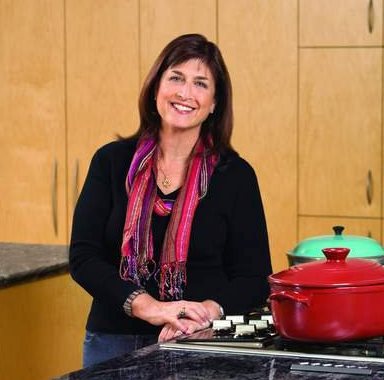This recipe is featured in Tina Wasserman's newest book, Entrée to Judaism for Families, filled with tools to help children learn to cook with confidence, with clear, step-by-step instructions for every recipe and tips for adults to make the experience safe and rewarding.
Kuku is a delicious omelet-like pancake made in Iran. Before 1935, Iran was called Persia, and Jewish people have lived in Persia for almost 2,500 years. When King Solomon’s Temple was destroyed in 586 BCE, thousands of Jews were exiled to Babylonia, which at that time included the lands of Persia. The story of Purim takes place in Persia, in the city of Shushan.
Kuku are light and fluffy and often contain vegetables and green herbs. Here are two recipes, one using spinach and this one with cauliflower. Persians introduced the Moors to spinach, and cauliflower was introduced to Persian cuisine from neighboring Asia Minor (present-day Turkey). After the Moors conquered Spain, they introduced the vegetables to the Jews, and along with raisins, they were favored by the Spanish Moors and Jews for centuries. Although the Jews were exiled from Spain in 1492, their cooking traditions continued. So whenever you see a recipe that combines raisins with spinach or cauliflower, you can tell that it is a dish with Jewish connections!
Najmieh Batmanglij is my (and most Americans’) go-to authority on Persian cuisine. Her recipes inspired me to create the following. Kuku can be served hot out of the oven, at room temperature, or cold. This is a perfect recipe to make with children because it can be served whenever you have time to eat it as a snack or rewarmed as a light lunch or brunch dish.
- If the cauliflower is fresh, then chop into small pieces; if frozen, defrost and drain in a colander. Cut the onions in half top to bottom and then thinly slice. You should have about 4 cups.
- Heat a large frying pan on high for 15 seconds. Add 3 tablespoons of oil and heat for 10 seconds more. Lower the heat to medium. Add the cauliflower, onions, and salt to the pan, stir to combine, coverthe pan, and then cook for 3 minutes.
- Uncover the pan and sauté until the cauliflower is soft and the onions are light golden brown. Add the garlic, and cook 1 minute more. Do not burn the garlic.
- Transfer the cauliflower/onion mixture to a large mixing bowl, and mash with a potato masher until the cauliflower becomes a coarse puree. Set aside.
- Preheat the oven to 350°F. Grease a 1½-quart casserole or 10-inch glass pie plate with the additional 2 tablespoons of oil.
- Using a fork, combine the eggs, pepper, turmeric, cumin, and raisins in a 1-quart bowl to the cauliflower and mix to thoroughly combine.
- Pour the egg mixture into the greased casserole or pie plate, and bake on the center shelf of the oven for 30 minutes or until the top is golden and the eggs are cooked in the center. Serve immediately or at room temperature.
Note: Cut the cooled kuku into 1-inch squares, and place on a plate with toothpicks for bite-sized snacks or appetizers during the seder or anytime you need hors d’oeuvres.
Kitchen Conversations
Create your own kuku. What vegetable or vegetables would you like to use? What spices would make it taste good?
- This is a good recipe to introduce cooking at the stove because the mixture won’t spatter and scare a young child.
- It is very important that the child be standing on a stable surface. No chairs!
- Make sure the stove is at least at midriff height. Faces should be far away from cooking utensils.
- Hot casseroles should be removed from the oven by an adult or a supervised child over the age of 10.
Learn more about the history of Jewish Persian food and find additional recipes.



